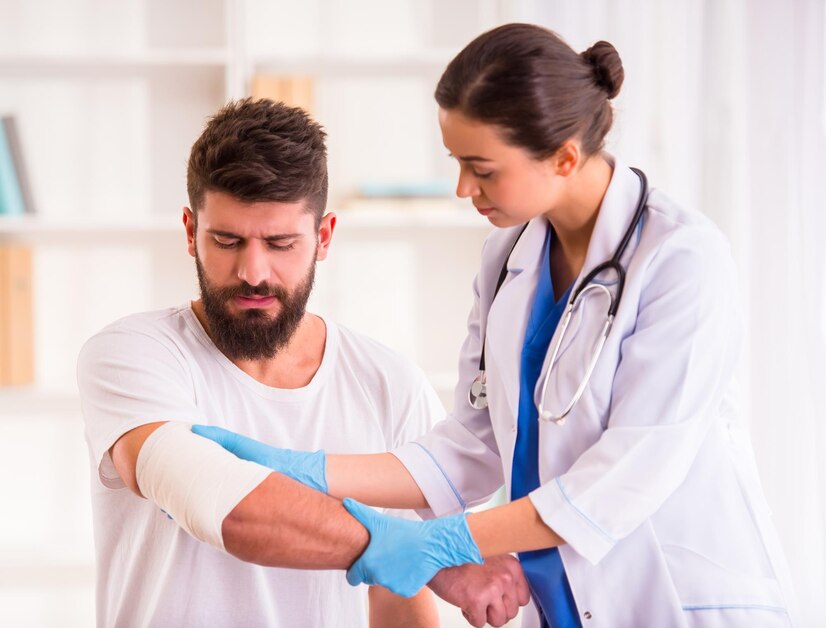Auto Injury and Organ Damage: A Critical Overview of Treatment
Motor vehicle accidents, despite advancements in safety features, can still result in significant trauma to the human body. Among the most serious consequences are injuries to internal organs, which can range from contusions and lacerations to complete rupture. Prompt and effective treatment is paramount in these situations to minimize long-term complications and improve the chances of survival.

Immediate Response and Diagnosis
The immediate aftermath of an auto accident involving suspected organ damage is critical. Paramedics and emergency medical technicians (EMTs) at the scene will assess the patient’s vital signs and perform a rapid trauma assessment. Key indicators of potential organ damage include:
- Severe abdominal or chest pain
- Signs of internal bleeding (e.g., bruising, swelling, rigidity)
- Changes in heart rate or blood pressure
- Difficulty breathing
- Loss of consciousness
Upon arrival at the hospital, a multidisciplinary team of specialists, including trauma surgeons, radiologists, and critical care physicians, will be involved. Diagnostic procedures are crucial for identifying the extent and location of the organ damage. These may include:
- Imaging Studies: Computed tomography (CT) scans, ultrasounds, and X-rays are often used to visualize internal organs and identify injuries such as lacerations, hematomas (collections of blood), or perforations.
- Blood Tests: These can help assess for internal bleeding, organ function, and overall physiological status.
- Diagnostic Peritoneal Lavage (DPL) or Focused Assessment with Sonography for Trauma (FAST): These rapid bedside procedures can help identify the presence of blood or fluid in the abdominal cavity, indicating potential organ injury.
Treatment Strategies for Organ Damage
The treatment approach for organ damage following an auto injury depends heavily on the specific organ(s) involved, the severity of the injury, and the patient’s overall condition. Common treatment strategies include:
Non-Surgical Management
In some cases of minor organ damage, non-surgical management may be appropriate. This may involve:
- Close Monitoring: Regular assessment of vital signs, pain levels, and laboratory values to ensure the injury is not worsening.
- Rest and Activity Restriction: Allowing the injured organ time to heal naturally.
- Pain Management: Medications to alleviate discomfort.
- Blood Transfusions: To address blood loss and maintain adequate oxygen-carrying capacity.
Surgical Intervention
More severe organ damage often necessitates surgical intervention. The goals of surgery may include:
- Repairing Lacerations or Tears: Suturing or otherwise repairing damaged tissue.
- Controlling Bleeding: Identifying and ligating or cauterizing bleeding vessels.
- Removing Severely Damaged Tissue or Organs: In cases of irreparable damage, such as a ruptured spleen or severely injured bowel, removal may be necessary.
- Addressing Associated Injuries: Repairing damage to blood vessels, nerves, or other structures.
Post-Operative Care and Rehabilitation
Following surgery or non-surgical management, comprehensive post-operative care and rehabilitation are crucial for optimal recovery. This may involve:
- Pain Management: Continued medication and alternative therapies to manage pain.
- Infection Control: Antibiotics and wound care to prevent infections.
- Nutritional Support: Ensuring adequate caloric and nutrient intake to promote healing.
- Physical Therapy: To regain strength, mobility, and functional independence.
- Occupational Therapy: To help patients return to daily activities.
- Psychological Support: Addressing the emotional and psychological impact of the trauma.
Long-Term Recovery and Support
The recovery process from organ damage after an auto injury can be lengthy and challenging. Patients may require ongoing medical follow-up, rehabilitation, and support services. It’s also important to consider the potential long-term physical and emotional consequences of such injuries. Support groups, counseling, and legal resources can be invaluable during this time.
Conclusion
Organ damage resulting from auto injuries requires immediate and specialized medical attention. Accurate diagnosis and timely intervention, whether surgical or non-surgical, are critical for improving patient outcomes. The journey to recovery is often long and necessitates comprehensive post-operative care and rehabilitation. Understanding the treatment pathways and available support systems is essential for both patients and their families navigating this challenging experience.
Frequently Asked Questions (FAQs)
1. What are the most commonly injured organs in auto accidents?
The spleen, liver, kidneys, and bowel are frequently injured in car accidents due to their location and vulnerability to blunt force trauma.
2. How is internal bleeding typically detected after a car accident?
Doctors use imaging studies like CT scans and ultrasounds, as well as blood tests and sometimes bedside procedures like FAST exams, to detect internal bleeding.
3. What is the typical recovery time for organ damage after an auto accident?
Recovery time varies greatly depending on the severity of the injury, the organ involved, and the individual’s overall health. It can range from weeks to months or even longer.
4. Will I need surgery if I have organ damage from a car accident?
Not always. Minor organ injuries may be managed non-surgically with close monitoring. However, significant damage often requires surgical repair or removal.
5. What kind of long-term support is available for people who have experienced organ damage from auto injuries?
Long-term support can include ongoing medical care, physical and occupational therapy, pain management specialists, psychological counseling, and legal assistance.
Visit our website https://specialtycareclinics.com/auto-injury/ to learn more about auto injury recovery resources and support services.
